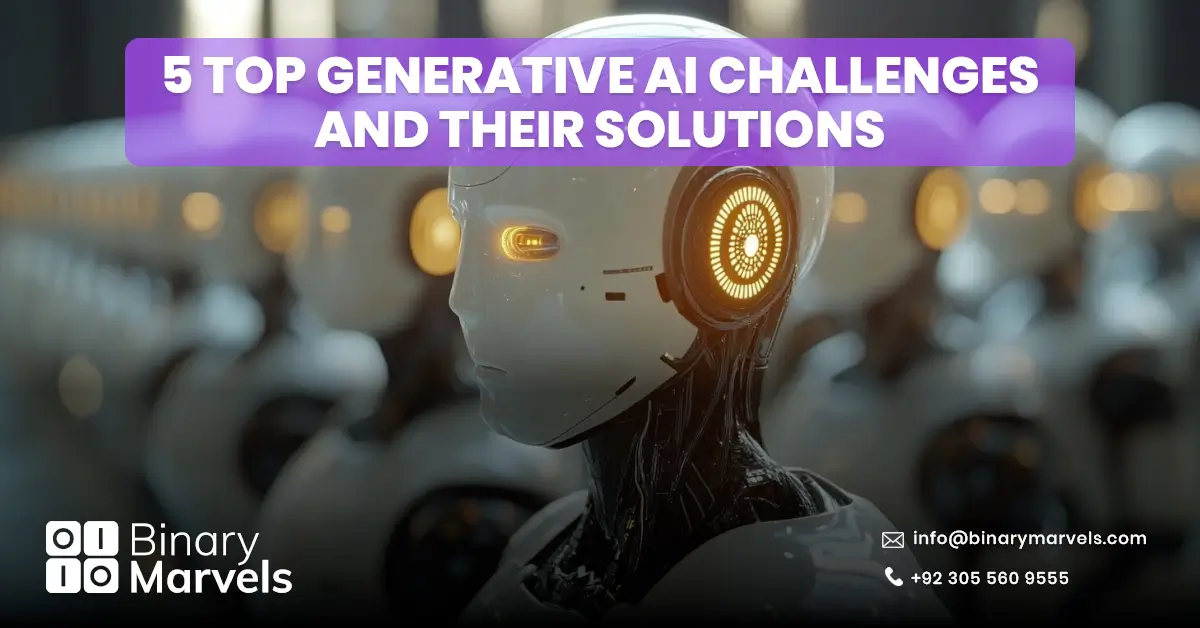
In 2025, the landscape of machine learning continues to evolve rapidly, with Open-Source LLMs (Large Language Models) becoming increasingly significant for researchers, developers, and companies alike.
These models are not only transforming how we interact with AI but also pushing the boundaries of what’s possible in areas like natural language processing (NLP), text generation, and more.
If you’re looking to explore the most impactful open-source LLMs this year, here are the top LLM models for 2025 that are setting trends in the AI world.
Also Read: Top 10 AI Companies in Pakistan
What Are Large Language Models (LLMs)?
LLMs, or Large Language Models, are a subset of artificial intelligence that uses vast amounts of text data to learn language patterns and understand context. These models are typically built using deep learning techniques, particularly transformers, which help process and generate human-like text. In 2025, LLMs have advanced to a point where they can perform a wide range of tasks, including language translation, summarization, text generation, sentiment analysis, and more, making them invaluable for both businesses and individual developers.
The power of LLMs lies in their ability to understand and generate human-like text at scale. By training on massive datasets, these models can learn intricate details about grammar, context, and even cultural nuances, enabling them to produce highly relevant and contextually appropriate content. Their open-source nature makes them accessible for anyone in the AI community to improve, adapt, and deploy across various industries, whether it’s for chatbots, content creation, or data analysis.
7 Top Open-Source LLMs for 2025
1. GPT-NeoX-20B: The Robust Performer
Developed by EleutherAI, GPT-NeoX-20B is one of the most powerful open-source models available today. With a staggering 20 billion parameters, it stands out as a robust performer capable of generating coherent and contextually relevant text across a wide array of tasks, including text generation, summarization, and even complex question answering.
The model’s architecture leverages the same transformer technology used by GPT-3, making it highly efficient and capable of understanding and processing vast amounts of text data. What sets GPT-NeoX-20B apart is its accessibility – being open-source, it allows developers and researchers to fine-tune and customize it for specific use cases without the limitations of proprietary solutions.
Its massive scale combined with open-source accessibility makes GPT-NeoX-20B an essential tool for those seeking powerful language models but without the cost constraints that come with proprietary models. Whether for advanced NLP tasks or experimental AI projects, this model offers exceptional performance at scale, empowering businesses, educators, and research institutions alike.
2. BLOOM (BigScience Large Open-science Open-access Multilingual Language Model)
BLOOM is a groundbreaking collaborative open-source project that has garnered immense attention in the AI community. Developed by BigScience, BLOOM is a multilingual open-source LLM that supports over 46 languages, including less-represented ones, making it an incredibly valuable tool for international applications. BLOOM’s ability to work in multiple languages sets it apart from many other LLMs that are primarily designed for English.
What makes BLOOM even more impressive is the collaborative effort behind its development. A community of over 1,000 researchers from around the world contributed to its creation, ensuring that it reflects diverse linguistic and cultural perspectives. BLOOM is ideal for a range of use cases, including language translation, multilingual chatbot development, and content generation in multiple languages. As a truly open-access project, it invites contributions from the AI community, ensuring continuous improvement and refinement.
3. T5 (Text-to-Text Transfer Transformer)
T5, or Text-to-Text Transfer Transformer, developed by Google Research, is one of the most versatile and innovative open-source language models. Unlike other models that are designed for specific tasks like translation or text summarization, T5 treats every NLP task as a “text-to-text” problem. Whether it’s text classification, language translation, question answering, or summarization, T5 can be fine-tuned to handle them all in a unified framework.
What makes T5 truly powerful is its flexibility – developers can adapt it for a wide range of applications without needing to train separate models for each task. By leveraging the text-to-text approach, T5 offers superior performance on a variety of NLP benchmarks and is widely adopted in both academia and industry. Its open-source nature allows for extensive customization and use in real-world projects, making it an indispensable tool for anyone working in NLP or AI.
4. LLaMA (Large Language Model Meta AI)
LLaMA, developed by Meta (formerly Facebook AI), is an open-source model designed to optimize both efficiency and scalability in large-scale machine learning applications. Unlike other models that tend to require massive computational resources, LLaMA offers a more optimized architecture that ensures high performance while being less resource-intensive. This makes it an excellent choice for developers and businesses who require advanced NLP capabilities without the need for extensive hardware setups.
LLaMA is particularly valuable in scenarios where resource constraints are an issue, as it can achieve remarkable results even with smaller datasets. Its versatility spans various tasks such as text generation, summarization, translation, and more. The model has been designed with a focus on minimizing bias while maintaining the ability to handle a broad array of complex tasks, making it an ideal tool for businesses and research labs aiming to deploy effective and cost-efficient AI solutions.
5. PaLM (Pathways Language Model)
Developed by Google, PaLM is a state-of-the-art open-source language model that is built to scale. One of the standout features of PaLM is its ability to “learn to learn,” which means it can generalize across domains, making it highly adaptable for a variety of NLP tasks. With PaLM, Google introduced a new method known as “Pathways,” which helps in scaling the model to a larger number of tasks while maintaining a balance between performance and efficiency.
PaLM is known for its impressive performance in both zero-shot and few-shot learning, meaning it can achieve high accuracy even when provided with minimal training data for new tasks. Its ability to handle both structured and unstructured data with ease makes it one of the most powerful and flexible open-source LLMs available. Developers looking for an adaptive, scalable, and cutting-edge model to integrate into their applications will find PaLM to be an invaluable tool.
6. OPT (Open Pre-trained Transformer)
OPT, developed by Meta, is an open-source LLM that focuses on improving the accessibility of high-performance language models. With the increasing demand for powerful language models, OPT was created as a more transparent and open alternative to proprietary models. It is based on the Transformer architecture, similar to GPT models, and has been fine-tuned to excel in a wide range of NLP tasks, from content generation to more specialized tasks such as named entity recognition and question answering.
What sets OPT apart is its focus on balancing model size with accessibility. While it is highly efficient and provides excellent performance, OPT does not require the immense computing power that many other large models do. Its open-source nature allows researchers and developers to adapt the model for specific use cases and integrate it into various applications without the barriers of high licensing costs or restrictive terms of use.
7. RoBERTa (Robustly Optimized BERT Pretraining Approach)
RoBERTa, developed by Facebook AI, is an advanced version of BERT (Bidirectional Encoder Representations from Transformers). While BERT was a groundbreaking model for natural language processing, RoBERTa takes it a step further by fine-tuning the training process to improve its performance significantly. RoBERTa is optimized for speed and accuracy, and it eliminates several of the restrictions present in BERT, such as the need for masked language model training.
RoBERTa has become widely adopted for tasks such as sentiment analysis, text classification, and named entity recognition due to its ability to understand and generate highly accurate text. It has been especially noted for its superior performance on NLP benchmarks, where it outperforms BERT and many other models in terms of both accuracy and efficiency. RoBERTa’s open-source nature makes it a popular choice for businesses and research teams aiming to build high-performing AI systems.
Why Open-Source LLMs are Essential for Developers in 2025?
Open-source LLMs are becoming indispensable tools for developers and businesses due to their cost-effectiveness and accessibility. These models provide flexibility for customization and fine-tuning, allowing companies to build tailored solutions without the hefty price tag of proprietary models.
Additionally, open-source LLMs contribute to the AI community’s collective knowledge, enabling ongoing improvements and innovations. With access to these powerful tools, businesses can stay ahead of the competition by integrating the latest advancements in natural language processing into their products and services.
Why Choose Binary Marvels for AI Development Services?
At Binary Marvels, we specialize in delivering top-tier AI development services using the most powerful open-source LLMs. From smart chatbots to NLP automation and intelligent analytics, we help businesses bring AI ideas to life—quickly, effectively, and affordably.
- Expert in top LLMs like GPT-NeoX, BLOOM, and LLaMA
- Customized solutions tailored to your business needs
- Cost-saving open-source tech, no licensing fees
- Full support from development to deployment
Conclusion
As the demand for advanced natural language processing tools grows, open-source LLMs are paving the way for innovation in 2025. Whether you’re looking to integrate AI into your applications or develop a state-of-the-art NLP system, these top Open-Source LLMs provide the foundation you need to succeed. By leveraging these models, developers can achieve powerful, scalable, and cost-effective solutions for their AI-driven projects.
At Binary Marvels, we understand the importance of staying ahead in the digital world. As one of the Best Software House in Pakistan, we offer comprehensive Generative AI solutions, ensuring your projects are powered by the latest in open-source technology. Explore our services today to take your AI applications to the next level!
Supercharge Your Business with AI Today!
As a trusted AI Development Company in Pakistan, we deliver cutting-edge AI Development Services designed to streamline your operations and enhance customer engagement.
Don’t wait—connect with us now and take your business to the next level!









